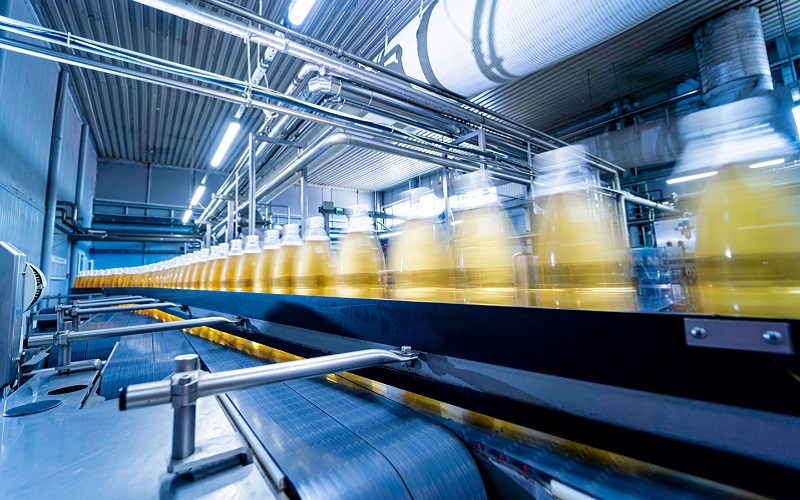From the Barley in the Fields, to the Beer in Our Hands: Carlsberg’s Sustainability Journey
For the past 175 years, Carlsberg has continuously reinvented itself from a marketing, innovation and product perspective, while remaining true to its core values of enriching communities while manufacturing quality drinks.
Spanning 140 brands, 40,000 employees, 150 global markets, and 12.5 billion liters of alcoholic and non-alcoholic drinks, the operation is vast. And, in recent times, this has made the critical notion of sustainability an equally vast challenge. The company’s Sail ’27 mission is the second iteration of a plan to “brew for a better today and tomorrow,” plotting a roadmap for a future based on the concept of zero:
Zero carbon footprint, zero farming footprint, zero packaging waste, zero water waste, zero irresponsible drinking, and a zero-accident culture.
Carlsberg’s sustainability efforts are marked by significant advancements, including achieving net zero emissions in several of its breweries and aiming to fully transition to renewable energy across all its facilities by 2040. Carlsberg has also introduced electric trucks and established a specialized transportation control tower in Poznan, Poland. This initiative is central to enhancing the management and efficiency of its logistics operations throughout Europe.
The success of Carlsberg’s overall sustainability strategy will largely be driven by optimizing this transportation process. But, through Carlsberg’s relationship with Blue Yonder, it has become clear that the entire production and supply ecosystem must be connected for these transportation ambitions to be met. In a recent webinar, Carlsberg shared more on this topic.
A Digital Response to Shared Pressures
It’s important to note that Carlsberg certainly isn’t alone in this challenge to achieve more with less, to raise profits while investing in new solutions, and to overhaul processes to become more sustainable without harming the growing business.
Pressures come in the form of regulations, both nationally and internationally for global operations such as Carlsberg’s. They come from customers who now cite sustainability as a reason to shop with a certain provider. They come from colleagues and employees who also want to work for forward-thinking, caring organizations. And they come from shareholders who realize that sustainability doesn’t just implicate the environment — it means complete futureproofing across the business, people and planet.
To trigger such widespread improvements without harming other areas of the company, manual intervention is no longer an option. The levels of speed, accuracy and agility just aren’t sufficient without digital input… without new software… without automation.
Connected Automation
Automation is pivotal in addressing the speed aspect of sustainability goals. Nearly all strategies put forward by organizations, including Carlsberg, come with a 2030 or 2040 asterisk. The former deadline isn’t far away.
This pressure is also why an end-to-end approach is so vital. By addressing the entire supply ecosystem as a conjoined concern, and then implementing technologies that bring visibility and connectivity to those different strands, all areas can be optimized as one effort and one investment and augmentation roadmap. Dealing with each area — planning, manufacturing, distribution, fulfilment, etc. — as siloed entities will not only yield less accurate data and a failure to promise deliveries to consumers, but it will probably incur more costs for less returns while taking much longer.
Blue Yonder Transportation Management solutions are one string in a wider bow that allows for complete capability and capacity to be analyzed, and therefore responded to. This includes demand planning, volume assessments at a granular level, knowing where best to source from to meet omni-channel demand, where to then position inventory based on known demand and where customers are located, and, of course, how best to then fulfill orders and to optimize the last mile.
Getting the Beer in Our Hands, in the Most Sustainable Way
Strictly from a transportation perspective, there is then clear visibility and optimization capabilities around how best to route supply, to route orders, to reduce truck miles, to stack inventory, to optimize the labor force, to position and use equipment. Each of these individual elements tick the parallel KPI boxes of saved money, lower emissions, and improved customer satisfaction.
Blue Yonder Transportation Management solutions also ensure data clarity: continuous reporting of performance related to the carbon footprint of materials during sourcing, the efficacy of different equipment and people, how space is being used both within warehouses and vehicles, the impact of third-party logistics companies or logistics service providers (3PLs/LSPs) on internal metrics, and, ultimately, the entire extent of emissions and costs associated with each and every end-to-end product process. In Carlsberg’s case, “from the barley in the fields to the beer in our hands.”
This reporting capability also informs further investments for the future, knowing with surety that electric trucks, for example, will have a positive effect on overheads, as well as net zero goals. Knowing also, that by stacking products in a certain way, X amount of space will be saved, leading to less trucks needed, reducing the overall miles on the road and emissions in the air.
Quantifying sustainability is integral when businesses like Carlsberg are against the clock to achieve stated targets. How else will they know if their transportation transformations are traveling in the right direction for the next six years, let alone another 175?
By not only opting for a best-in-class transportation management solution, but connecting it to capability metrics across supply, manufacturing, distribution, external partners, and the customer, complete end-to-end sustainability can be achieved.
A prospect to raise a glass to.
Should you be curious to hear directly from Carlsberg and Tomas Tomasson, Service Owner Logistics and Transportation | IIT WE Supply Chain, please watch the webinar “Connecting the Dots for an Intelligent and Sustainable Supply Chain.”

